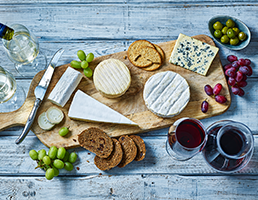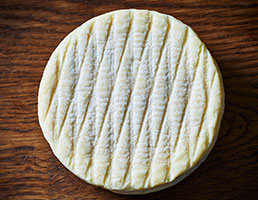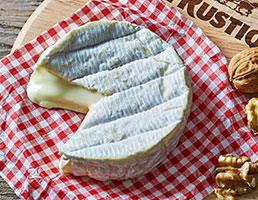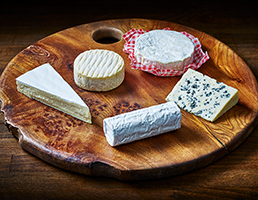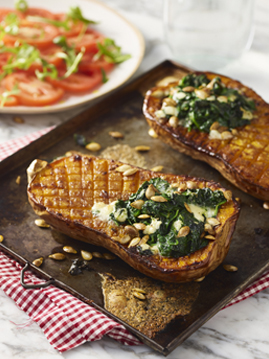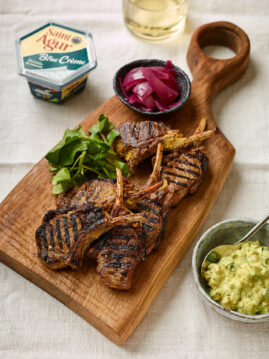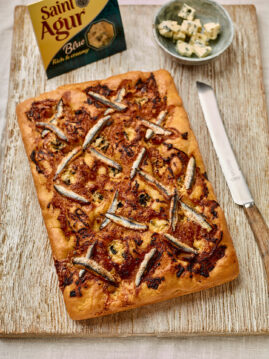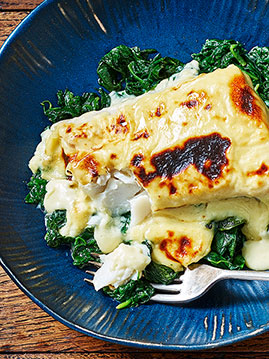Unsure whether a cheese rind is edible or not? Wondering why it’s even there, or why some cheeses have it while others don’t? These are some of the most common questions surrounding cheese rinds. Fear not, as this guide will provide you with answers while helping you unlock a new dimension of your cheese-tasting experience.
Cheese rinds are the outer layer of cheese that forms during the aging process. They can vary greatly in texture, flavour, and appearance. Rinds have three key purposes:
1.Protection: Rinds protect the cheese from external contaminants and help maintain its shape.
2.Flavour Development: Rinds contribute to the flavour profile of the cheese, often adding complexity and depth.
3.Moisture Regulation: Rinds help regulate the moisture content within the cheese, ensuring proper aging.
There are several types of cheese rinds, each formed based on the type of cheese and the aging process.
-Bloomy rinds: Bloomy rinds are soft, white, and velvety, created by the addition of mould cultures. Commonly found on cheeses like Brie and Camembert, they are edible and contribute a creamy, mushroom-like flavour.
-Washed rinds: Washed rinds are created by regularly washing the cheese with a brine solution, beer, wine, or other liquids. This process encourages the growth of bacteria that give the rind a reddish-orange color and a pungent aroma. Examples include Epoisses and Taleggio. These rinds are often sticky and can have a strong, tangy flavour.
-Natural rinds: Natural rinds develop on their own as the cheese ages. They are typically found on hard and semi-hard cheeses like Parmigiano-Reggiano and Raclette. These rinds are often firm and can range from smooth to rough in texture.
-Artificial rinds: Artificial rinds are created using materials like wax or cloth to protect the cheese during aging. Wax rinds are commonly found on cheeses like Gouda and Edam, while cloth rinds are used for traditional English Cheddar. These rinds are not meant to be eaten and should be removed before consumption.
When it comes to eating cheese rinds, the general rule is that natural rinds are edible, though whether you enjoy them depends on personal preference. Bloomy and washed rinds of Le Rustique Brie and Camembert are not only safe to eat but can also enhance the flavour and texture of the cheese. For hard rinds like Parmesan, while they can be tough to chew, they can still be repurposed by simmering them in soups or sauces for a boost of umami flavour. On the other hand, wax and cloth rinds are inedible and should always be discarded.
Here’s what you gain from eating the rind:
-Enhanced Flavour: Rinds often have concentrated flavours, adding depth and complexity that complements the cheese.
-Textural Variety: The rind provides an additional texture that contrasts with the creamy or crumbly interior of the cheese, making each bite more interesting.
-Sustainability: Eating the rind helps reduce food waste and ensures you make the most of the cheese you purchase.
-Nutritional Value: Natural and bloomy rinds can contain beneficial moulds and bacteria, contributing to gut health and offering additional nutrients.
-Culinary Potential: Even if a rind is too tough to chew, it can be simmered in soups or sauces to infuse dishes with a rich, savoury flavour.
While not all cheese rinds are meant to be eaten (such as those coated in wax or cloth), many natural rinds are perfectly safe and enjoyable to consume. Next time you slice into a wedge of cheese, don’t overlook the rind—it might just surprise you!
So, don’t be afraid to embrace the rind and savour every part of your cheese!
Find more tips on how to taste cheese here!


